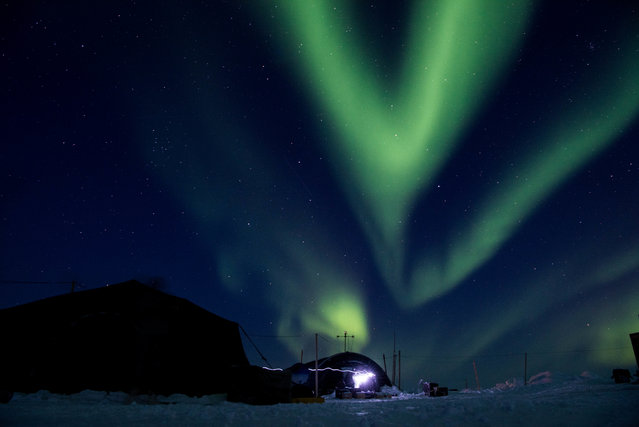
The aurora borealis displays above Ice Camp Skate, Beaufort Sea on March 9, 2018 during Ice Exercise (ICEX) 2018. ICEX 2018 is a five-week exercise that allows the Navy to assess its operational readiness in the Arctic, increase experience in the region, advance understanding of the Arctic environment, and continue to develop relationships with other services, allies and partner organizations. (Photo by U.S. Navy photo by Mass Communication 2nd Class Micheal H. Lee/U.S. Navy)
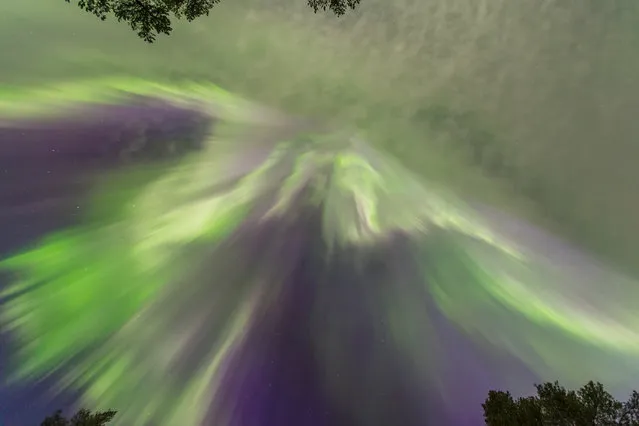
The Aurora Borealis (Northern Lights) is seen over the sky near the village of Pallas (Muonio region) of Lapland, Finland, September 8, 2017. (Photo by Alexander Kuznetsov/Reuters/All About Lapland)
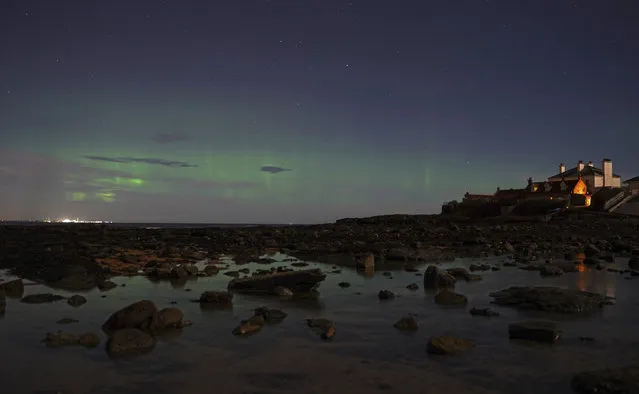
The Northern Lights, or Aurora Borealis over Whitley Bay, north east England, late Monday December 4, 2017. (Photo by Owen Humphreys/PA Wire via AP Photo)
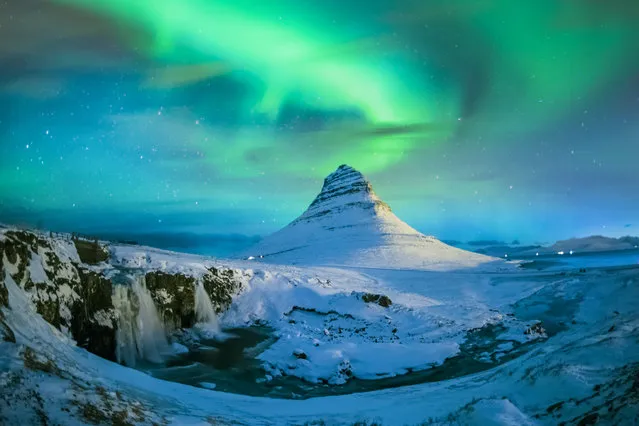
Northern lights over Mount Kirkjufell, Iceland on February 2, 2015. (Photo by Moment RF via Getty Images)
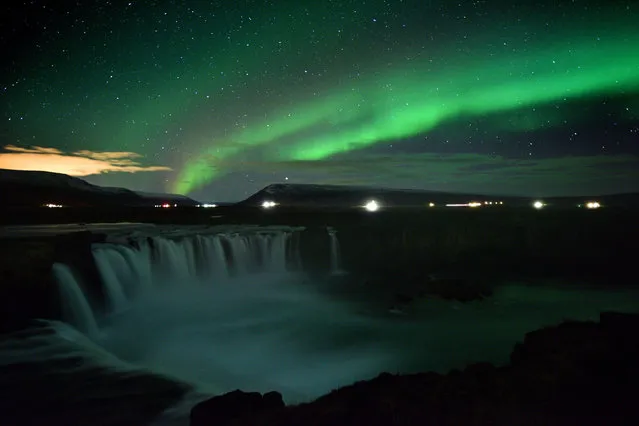
The aurora borealis, also known as Northern Lights, is seen over Godafoss waterfall, in the municipality of Thingeyjarsveit, east of Akureyri, in northern Iceland on October 14, 2018. (Photo by Mariana Suarez/AFP Photo)
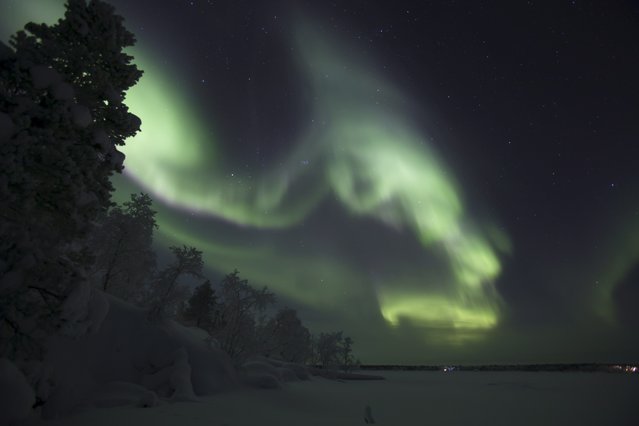
A picture taken on December 25, 2017 shows northern lights (aurora borealis), illuminating the sky of Finnish Lapland in Inari. (Photo by Irene Stachon/AFP Photo/Lehtikuva)
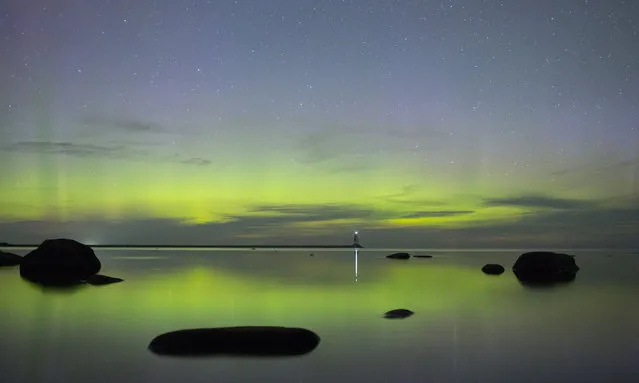
The Aurora Borealis (Northern Lights) is seen in the sky over Lake Ladoga in Leningrad Region, Russia on September 1, 2019. (Photo by Anton Vaganov/Reuters)
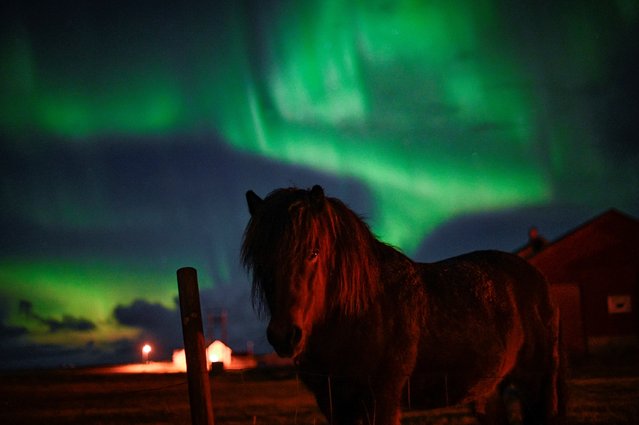
A poney stands under northern lights on September 30, 2018, in Unstad, Northern Norway. (Photo by Olivier Morin/AFP Photo)
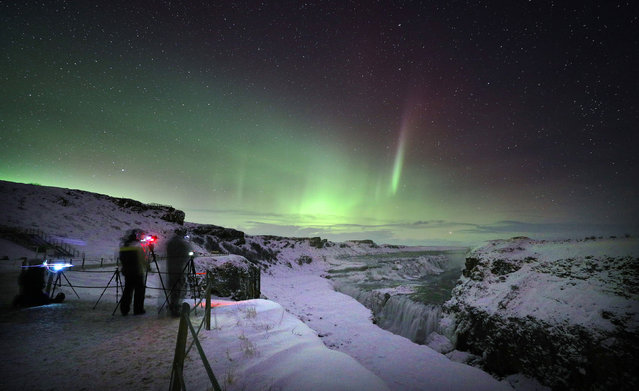
Aurora Borealis, or Northern Lights, shine over Gulfoss waterfall in Iceland on January 16, 2018. (Photo by Owen Humphreys/PA Images via Getty Images)
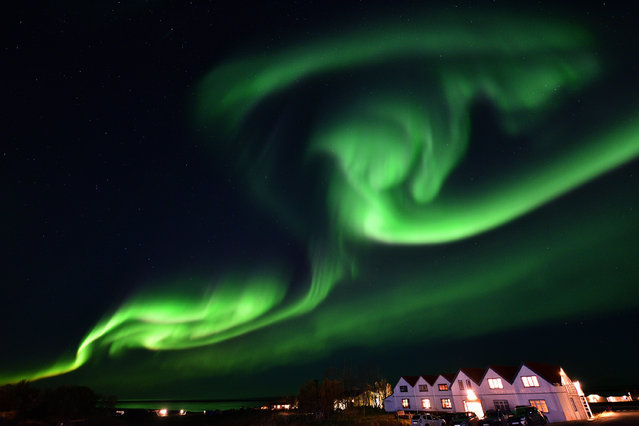
The aurora borealis, also known as northern lights, illuminates the sky along the Ring Road in southeastern Iceland, between Jokullsarlon glacier lagoon and Hofn, on October 7, 2018. (Photo by Mariana Suarez/AFP Photo)
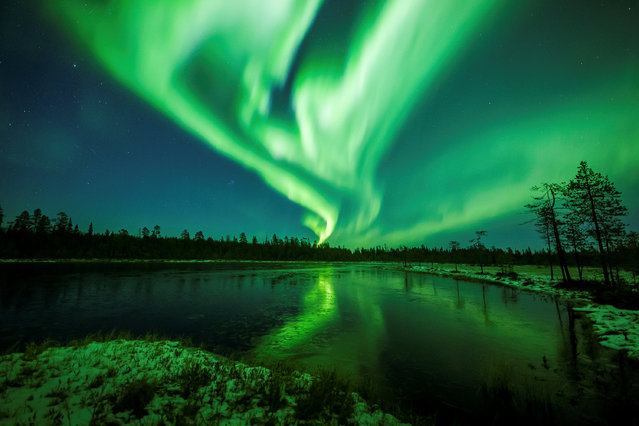
The Aurora Borealis (Northern Lights) is seen over the sky near Rovaniemi in Lapland, Finland, October 7, 2018. (Photo by Alexander Kuznetsov/Reuters)
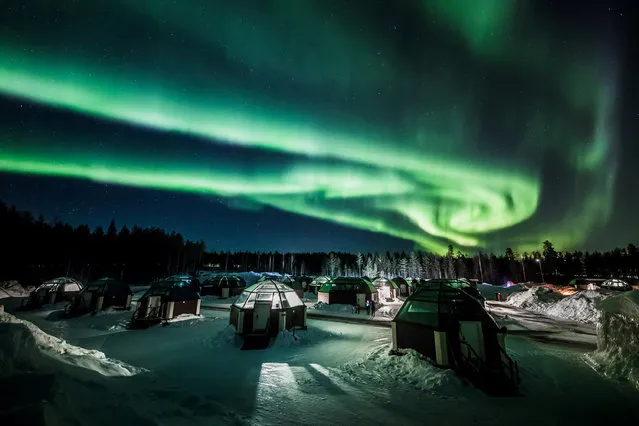
The Aurora Borealis (Northern Lights) is seen in the sky over Arctic Snowhotel in Rovaniemi, Finland on February 28, 2019. (Photo by Alexander Kuznetsov/Reuters)
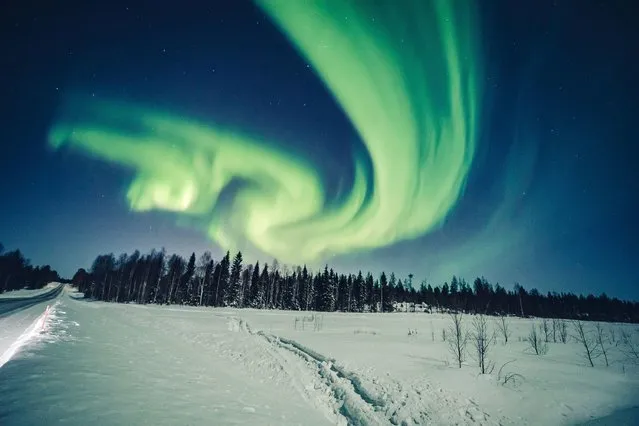
An aurora is seen in the sky in Rovaniemi, Finland on February 6, 2020. (Photo by Alexander Kuznetsov/Reuters)
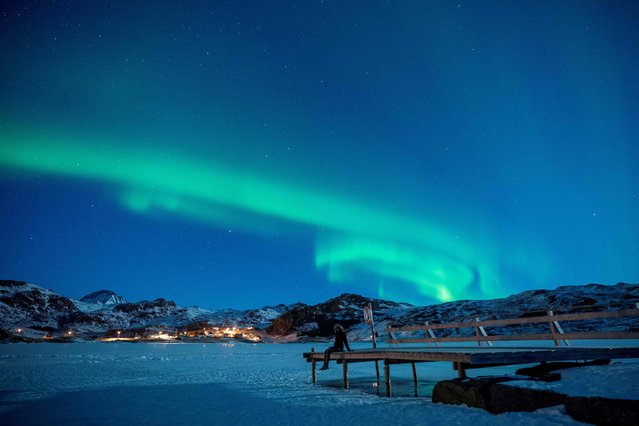
A woman sits on a pier on March 3, 2018 to watch northern lights (Aurora borealis), on the Lofoten Islands, in Bostad, in the arctic circle in northern Norway. (Photo by Olivier Morin/AFP Photo)
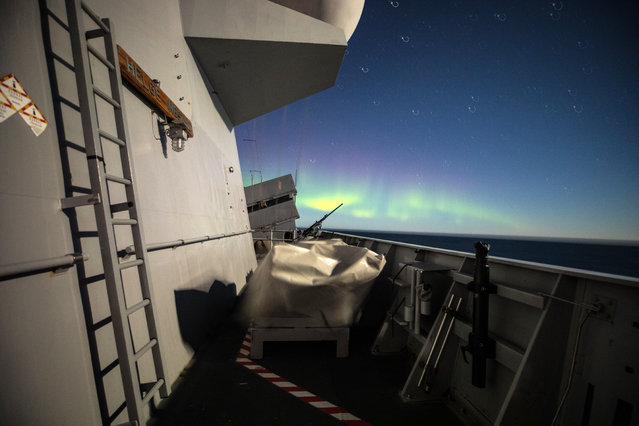
A handout photo made available by the Norwegian Armed Forces on 01 November 2018 shows Northern lights from KNM Helge Ingstad during Trident Juncture excercise in Norway, 29 October 2018. According to reports, some 50,000 participants from over 30 nations are expected to take part in the NATO-led military exercise in Norway from 25 October to 23 November 2018. (Photo by Marius Vågenes Villanger/EPA/EFE)
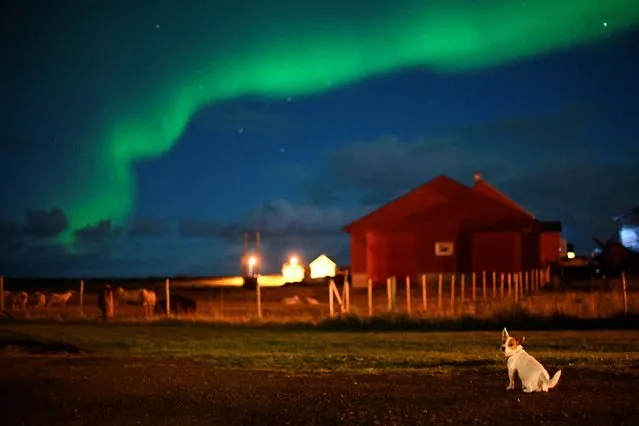
A dog stands under northern lights on September 30, 2018, in Unstad, Northern Norway. (Photo by Olivier Morin/AFP Photo)
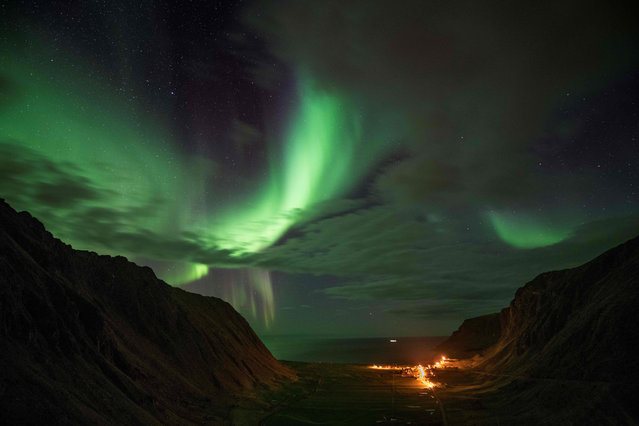
Northern lights (Aurora borealis) are photographed on Unstad's bay in the arctic circle, on September 22, 2017, on the eve of the opening of the Lofoten Masters 2017, the world's most northerly surf competition. (Photo by Olivier Morin/AFP Photo)
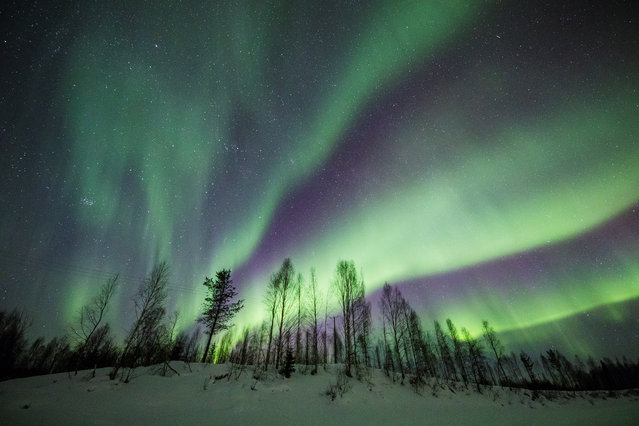
The Aurora Borealis (Northern Lights) is seen over the sky near Rovaniemi in Lapland, Finland, March 15, 2018. (Photo by Alexander Kuznetsov/Reuters)
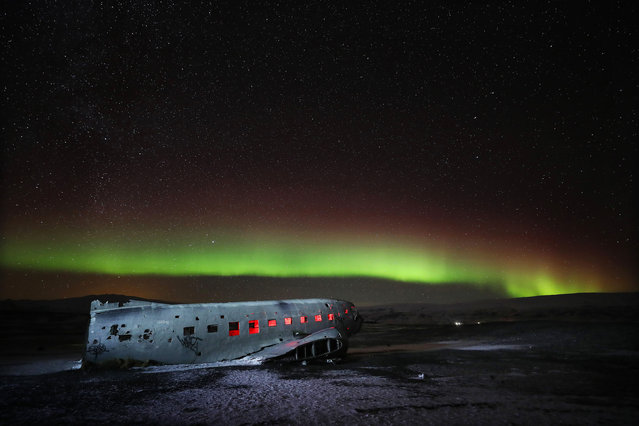
Aurora Borealis, or Northern Lights, shine over the plane wreck of a US Navy airplane – a Douglas Super DC-3 – on the Black Beach in Solheimasandur, south Iceland on January 18, 2018. (Photo by Owen Humphreys/PA Images via Getty Images)
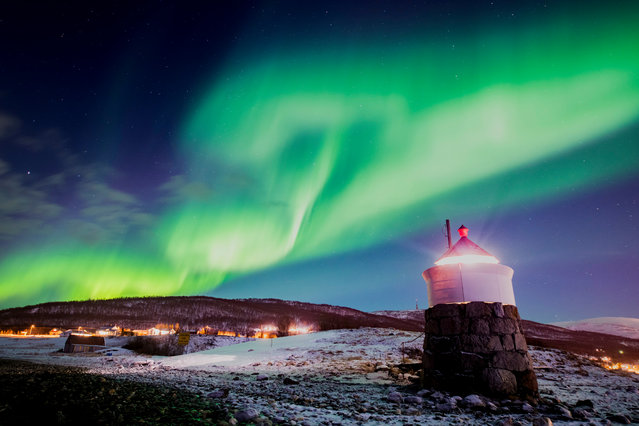
Aurora borealis or northern lights are visible in the sky above a lighthouse to the village of Strand near Tromso in northern Norway, 22 February 2018. Aurorae are caused by the interaction between energetic charged particles from the sun and gas molecules in the upper atmosphere of the earth, about 100 kilometres up. Streams of charged particles, called solar winds, flow out into space continuously from the sun at speeds of 400 to 500 kilometers per second. On reaching earth, the charged particles are drawn by earth's magnetic field to the poles, where they collide with gas molecules in the upper atmosphere, causing them to emit light. (Photo by Martial Trezzini/EPA/EFE)
29 Feb 2020 00:05:00,
post received
0 comments
